Beginner's Guide to Easy Snowboard Tricks
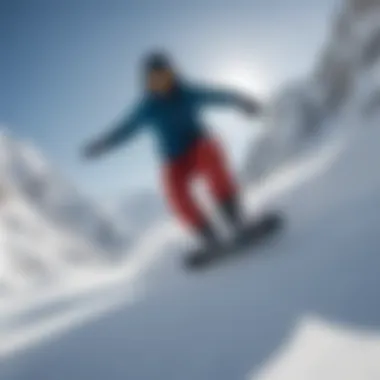
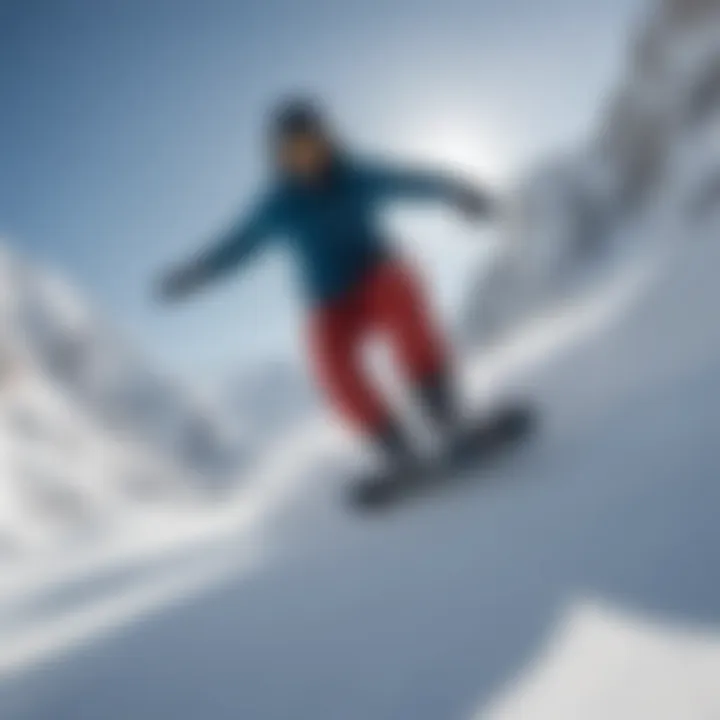
Intro
Snowboarding is not just a sport; it's an exhilarating adventure. For beginners, mastering snowboarding tricks can seem daunting. However, understanding the basics and gradually building skills can lead to noteworthy progress. This article aims to break down essential techniques and tips, providing a roadmap for those who are just starting their snowboard journey.
As you explore easy tricks, you will not only learn fun moves but also develop a solid foundation that can enhance your overall experience on the slopes. Knowing the fundamental techniques will prepare you for more challenging tricks in the future.
Let’s begin with the crucial elements of snowboarding techniques and tips.
Techniques and Tips
Skill Development
Developing your skills is crucial in snowboarding. Start by focusing on balance and control. Practicing basic movements will create muscle memory, helping you execute tricks with more precision. Here are some key areas to concentrate on:
- Stance: Ensure your feet are properly positioned on the board. Experiment with the distance and angle to find what feels most comfortable.
- Carving: Work on your ability to carve turns. This will enhance your overall control and prepare you for executing tricks.
- Flexibility: Strengthen your core and lower body to improve balance. Incorporating exercises off the slopes can significantly contribute.
Practical Techniques
Once you feel comfortable, you can start exploring specific tricks. Here are a few easy tricks perfect for beginners:
- The Ollie: This trick involves popping the board off the snow. Focus on bending your knees and springing upward while dragging the tail of the board back.
- The Nose Grab: Simple yet effective, the nose grab allows you to add style to your jump. While airborne, reach down and grab the nose of your board with your leading hand.
- The 180: This trick involves a simple rotation. Execute a jump off a small slope while turning your body to face the opposite direction in mid-air.
Common Mistakes to Avoid
While practicing, it's essential to be aware of common mistakes. Here are some pitfalls that many beginners encounter:
- Not bending your knees enough: Keeping limbs stiff can hinder your ability to absorb shocks.
- Over-rotating: Going too fast on a spin can lead to falls. Always time your rotations to match your speed.
- Lack of vision: Failing to look where you want to go can throw off your balance.
"Progressive skill development is key in snowboarding. It is better to master the basics than to rush into difficult tricks."
Gear and Equipment
Essential Gear for Beginners
Investing in the right gear is paramount for safety and performance. Here are some essentials:
- Snowboard: Choose a board suitable for your skill level. Softer boards are often more forgiving for beginners.
- Bindings: Make sure bindings fit well and allow you to adjust your stance.
- Boots: Comfortable and well-fitted boots provide necessary support and control.
Latest Innovations and Trends
Recent developments in snowboarding gear focus on safety and comfort. Technologies like shock-absorbing bindings and lightweight boards can enhance your experience. Always research products like Burton and K2 for the latest advancements.
Reviews and Comparisons
Before purchasing gear, read reviews from fellow snowboarders. Platforms like Reddit often present valuable insights and comparisons on different brands and models.
Safety Measures
Essential Safety Gear
Safety should always come first. Equip yourself with the following:
- Helmet: A well-fitted helmet protects against head injuries.
- Wrist Guards: These can prevent injuries when falling.
- Impact Shorts: Consider these for extra cushioning on your hips and tailbone.
Best Practices for Safe Participation
Understanding your limits is crucial for practicing snowboarding tricks safely. Start on softer slopes and gradually increase difficulty as your skills enhance. Additionally, always ride with a buddy.
Injury Prevention and Management
Many beginners face injuries due to falls. Focus on learning how to fall safely. Tuck your arms in and roll to minimize impact. If injured, know when to seek medical advice.
Spotlights on Extreme Sports
Featured Sport of the Month
Each month highlights a different extreme sport. This month, we explore snowboarding's rich culture, including community events and competitions.
Profiles of Prominent Athletes
Inspiration can be drawn from elite snowboarders like Shaun White and Chloe Kim. Reviewing their career journeys and achievements can motivate beginners. Each has unique techniques and styles that novices can learn from.
Preamble to Snowboard Tricks
Snowboarding is a thrilling sport, but mastering it requires skills that develop over time. Understanding the basics of snowboard tricks is essential for beginners aiming to enhance their riding experience. Tricks not only add flair to your snowboarding but also improve your overall technique. This section will provide a foundation for the importance of learning tricks, the benefits they bring, and considerations necessary for beginners.
Understanding Fundamentals
Fundamentals form the backbone of any snowboard trick. This includes balance, body positioning, and the coordination of movements. As a beginner, grasping these basic principles is critical. When you perform a trick, it is crucial to maintain control over your board. Practicing simple movements without the added complexity of tricks, such as turning or stopping, will build confidence.
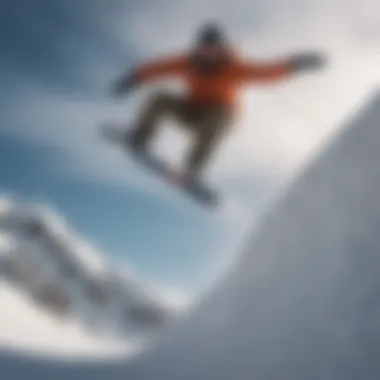
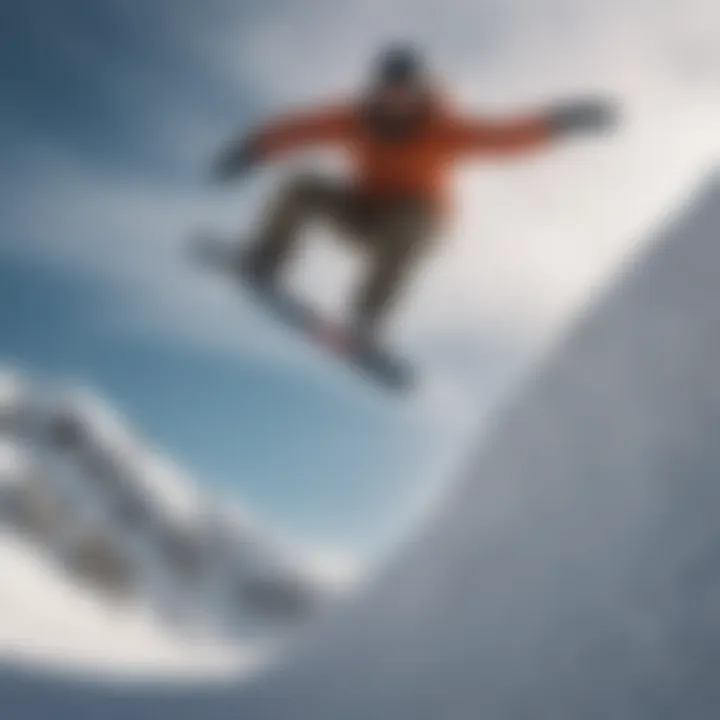
Moreover, understanding how your body reacts to shifts in weight is essential. For instance, leaning too far back during an ollie can cause you to lose balance. It can also lead to falls. Therefore, practicing basic stance and balance techniques should precede any attempts at more complex tricks.
The Importance of Progression
Progression in snowboarding is about advancing your skills thoughtfully. After grasping the fundamentals, it’s vital to approach tricks incrementally. Beginners should start with easy maneuvers before attempting more demanding feats. This method ensures that you develop muscle memory and confidence.
Each trick learned builds on the last. For example, mastering an ollie prepares you for jumping over obstacles and setting up for spins. It provides a clear path of progression that is rewarding.
"Learning tricks is like climbing a mountain; you must ascend step by step rather than trying to jump to the summit immediately."
Progression also minimizes the risk of injury. Snowboarding can be physically demanding. Practicing achievable tricks helps develop strength and flexibility. As you build your skills, you will feel more prepared for the next challenge on the slopes. In summary, understanding fundamentals and the importance of progression forms a solid base for all who want to explore the rich world of snowboard tricks.
Essential Equipment for Learning Tricks
When diving into the world of snowboarding tricks, the right equipment plays a crucial role. Having suitable gear not only ensures comfort and performance but also significantly impacts safety. Proper selection of your snowboard and supportive clothing can enhance learning experiences and skill acquisition.
Choosing the Right Board
Choosing the right snowboard is foundational for any beginner looking to execute tricks. A beginner’s snowboard should match the rider’s height, weight, and type of riding. A flexible board can be more forgiving, helping learners maneuver easily when trying new skills. Common beginner boards include the Burton Ripton and the K2 Raygun, which are user-friendly and promote stability.
For trick progression, consider a shorter board. Shorter boards can make it easier to initiate turns and tricks. Width is also important; make sure the board fits your boot size to avoid toe drag.
Additional factors such as the board's camber profile will also influence performance. For instance, a rocker board can offer more floatation in powder while a camber provides stability on hard snow. Depending on your learning environment, select a board that adapts to various conditions.
Clothing and Safety Gear
The right clothing ensures comfort and warmth while reducing the risk of injury. It is essential to layer clothing; starting with moisture-wicking base layers, insulating middle layers, and a waterproof outer layer. This will enable flexibility and warmth while maintaining a safe body temperature.
Wearing a helmet is a must for all snowboarders, especially beginners. Helmets like the Smith Holt provide solid protection. Knee pads and wrist guards are also advisable, as they protect vulnerable joints during falls. Other safety equipment includes impact shorts, which mitigate bruising from falls.
In summary, proper equipment selection maximizes enjoyment and safety on the slopes. The initial investment in a suitable snowboard and appropriate clothing will significantly enhance your skill development and confidence.
Basic Snowboard Tricks Overview
Understanding basic snowboard tricks is vital for beginners looking to enhance their skills on the slopes. These foundational movements not only build confidence but also pave the way for more complex maneuvers in the future. By mastering simple tricks, riders can develop a strong sense of balance and control, which makes traversing varied terrains more manageable. Additionally, showcasing these tricks can also elevate the social experience of snowboarding, as many enthusiasts share their progress and accomplishments with fellow riders.
Ollies
An ollie is often regarded as the cornerstone of many snowboarding tricks. This movement involves popping the tail of the snowboard off the ground while simultaneously lifting the front. The importance of mastering the ollie cannot be understated, as it serves as the basis for more advanced tricks, such as the 180 spin or various grabs. To perform an ollie effectively, riders should practice bending their knees and using their core for an explosive upward motion. Timing is crucial; the tail must hit the ground firmly to generate upward lift.
Key points to remember while practicing ollies:
- Focus on timing: ensure the pop coincides with the jump.
- Utilize your arms: swinging them can help gain lift.
- Practice on flat terrain first: this minimizes risk and aids in mastering the technique.
Noses and Tails
Noses and tails refer to the ends of the snowboard. Understanding their function is key to performing various tricks. Riders can utilize the nose of the board to initiate jumps or land certain tricks, while the tail is essential for popping off the ground. The differences between these parts create unique experiences when riding. Learning to use both effectively will enhance control and add versatility to trick execution.
Practicing with noses and tails involves:
- Popping off the tail: this sharp motion is crucial for executing jumps.
- Rolling the board: understanding how to lift the nose while descending can aid in fluid movement.
Basic Jumps
Basic jumps are the most straightforward tricks you can learn when starting on a snowboard. They build the confidence to leave the ground and experience the thrill of flight. Jumps can be performed on flat terrain or snow mounds found in many beginner parks. Understanding the mechanics of a jump—such as take-off and landing—will improve overall riding skills. Focus should also be placed on maintaining a balanced posture during the jump.
For successful jumps, consider the following tips:
- Approach slowly: avoid high speeds until comfortable.
- Bend your knees upon landing: this absorbs the impact and ensures stability.
- Stay centered: maintaining balance is crucial for a clean take-off and landing.
"Mastering basic snowboard tricks like ollies, jumps, and understanding the functions of the board enhance not only skill but also enjoyment on the slopes."
Tricks to Start With
When beginning your journey in snowboarding, starting off with the right tricks can significantly affect your learning curve and overall enjoyment. Focusing on foundational tricks is crucial. They will not only build confidence but also serve as the building blocks to more complex maneuvers in the future. Understanding and mastering simple tricks creates a solid base. This will enable vast improvement and progression.
The Straight Jump
The straight jump is one of the easiest tricks that any beginner can learn. It involves a simple upward lift off the ground. To perform this trick, you begin by riding down a small slope, then flex your knees to crouch low. This preparation will help you gain momentum. As you approach the jump, you should spring upward. The aim is to achieve both lift and stability in the air.
It is important to keep your body centered. Your arms should extend a bit, but maintain balance for a soft landing. Practicing this trick improves your board control. It also contributes to better timing and awareness of your movements. The straight jump builds confidence as you see your own progress. When repeating this, focus on smooth take-offs and landings.
The Spin
The 180 spin is a step up from the straight jump. It combines jumping with a rotation. This trick not only looks impressive but also enhances your overall balance. To learn this, start with the straight jump technique. As you leave the ground, turn your head and shoulders to one side. This engagement helps rotate your body.
As you finish the rotation, focus on steering your board in the same direction. When landing, aim to keep your knees bent for shock absorption. With practice, the 180 spin can become a very accessible and rewarding trick. It keeps the flow and adds more style to your riding.
The Grab
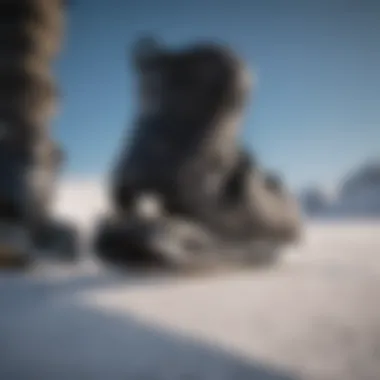
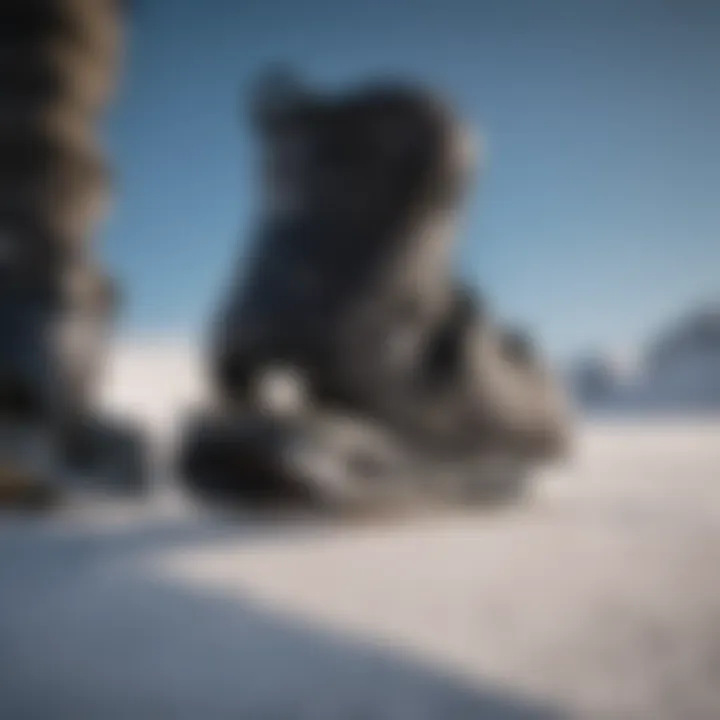
The grab is a trick that adds flair and individuality to jumps. It involves reaching down to grasp your snowboard while in mid-air. This not only looks cool but also improves your stability while airborne. Begin by mastering the straight jump first, as the grab is performed at the peak of a jump.
Several grab types exist depending on which board edge you choose to hold. The most popular of these is the "mute grab". This involves grabbing the heel edge with your leading hand. Ensure your knees remain bent. Practice the grab with both hands to develop versatility. The more confident you grow, the better your grabs will look in flight.
Engaging in these initial tricks fosters the right mindset for snowboarding. It is crucial to focus on your comfort level and avoid rushing to more difficult maneuvers too soon. Building skills slowly will help you become a more proficient snowboarder in the long run.
Practicing Technique and Safety
Practicing technique and safety is fundamental in snowboarding. It ensures that each snowboard trick is executed correctly and reduces the risk of injury. For beginners, developing a strong foundation in technique is crucial. Mistakes made early on can lead to bad habits, which may hinder progress over time. Therefore, focusing on correct technique serves not only to enhance performance but also to foster a safer snowboarding experience.
Warm-up and Stretching
Before hitting the slopes, warm-up exercises and stretching should not be overlooked. Engaging in a proper warm-up routine prepares your muscles for the physical demands of snowboarding. It helps to improve blood circulation, increase flexibility, and reduce the risk of strains. The following are some effective warm-up exercises for snowboarders:
- Dynamic stretches: Leg swings, arm circles, and torso twists help to loosen your muscles.
- Cardiovascular activities: Jogging in place or jumping jacks can elevate your heart rate.
Stretching should focus on the major muscle groups used in snowboarding such as the legs, back, and shoulders. Incorporating both static and dynamic stretching techniques enhances performance and mobility on the board.
Learning in Safe Environments
Finding a safe environment for practice is vital. Beginners should choose areas that are free from obstacles and have gentle slopes. Areas designated for learners are ideal since they offer more controlled settings. Furthermore, consider the following when selecting a location:
- Crowd Levels: Busy slopes can lead to accidents. Choose quieter times to practice.
- Surface Condition: Ensure the terrain is not icy or overly bumpy, which could increase the risk of falling.
Additionally, practicing in safe environments builds confidence. The more comfortable one is while learning, the easier it will be to progress to more complex tricks.
Using Spotters and Coaches
The importance of having spotters or coaches cannot be stressed enough. Learning with experienced peers or instructors greatly enhances safety. Spotters can offer guidance, provide feedback, and even catch you should you fall. Coaches, on the other hand, help refine technique, offering insights that may not be evident to novice snowboarders. Here are some advantages of having guidance in your journey:
- Safety: Spotters can assist during practice, reducing the risk of injury during trick attempts.
- Feedback: Real-time feedback from coaches can help correct mistakes before they become habits.
- Motivation: Encouragement from others can lift one’s spirits during challenging practice sessions.
In summary, practicing technique and safety is essential for novice snowboarders. By incorporating warm-up routines, choosing safe learning environments, and benefiting from the guidance of spotters and coaches, beginners can enhance their snowboarding skills while minimizing the risk of injury.
Building Confidence on the Snow
Confidence plays a crucial role in mastering snowboard tricks, especially for beginners. Building confidence can directly enhance performance on the mountain, allowing individuals to attempt and perfect new tricks with greater ease. When riders feel secure in their abilities, they are more likely to push boundaries and explore new techniques.
Developing a solid foundation of confidence requires attention to several specific elements. First, it is important to acknowledge that progression in snowboarding is not linear. Individual journeys will vary, and setbacks are a natural part of learning. Recognizing this can ease the pressure riders feel when things do not go perfectly. Focus on small achievements rather than overwhelming yourself with complex tricks right away.
Key Benefits of Building Confidence:
- Increased willingness to try new tricks
- Improved focus and concentration
- Better decision-making on the slopes
- Enhanced ability to manage risks
Confidence also influences how snowboarding feels on a visceral level. A confident rider is less likely to overthink movements, enabling a more fluid and enjoyable experience. The positive feedback loop created by attempting new tricks and experiencing success can significantly boost a rider's morale.
Setting Realistic Goals
When learning to snowboard, setting realistic goals is essential. Goals should be specific, measurable, achievable, relevant, and time-bound—often referred to as SMART goals. For instance, rather than setting an aim to "learn all tricks," a more achievable goal may be to master the 180 Spin in one month, gradually introducing new tricks thereafter.
Tips for Setting Goals:
- Start with fundamental skills before moving to tricks.
- Celebrate small wins; every trick mastered is progress.
- Keep adjusting goals based on comfort level.
- Stay patient; progress can be slow but worthwhile.
Setting appropriate benchmarks not only maintains motivation but also gives a clear path for skill advancement.
Handling Fear and Anxiety
Fear and anxiety are common experiences for snowboarders, especially when trying new tricks or learning in front of peers. However, learning to handle these emotions is vital for continued growth. Ignoring fear can result in mistakes or injuries, while excessive anxiety can prevent progression altogether.
To combat fear, consider approaching new tricks in a systematic manner:
- Visualize Success: Before attempting, imagine executing the trick successfully.
- Breathe: Utilize deep breathing techniques to calm nerves before jumping or spinning.
- Talk About It: Share experiences or fears with fellow snowboarders. Often, they provide support or insights that ease anxiety.
- Take Breaks: If feeling overwhelmed, take a step back to recharge mentally and physically.
"The key is to acknowledge fear but use it to fuel determination rather than inhibit it."
Handling fear effectively allows riders to maximize their potential in the sport. Building confidence and facing anxiety head-on creates a stronger foundation for learning and performing snowboarding tricks.
Videos and Tutorials
Videos and tutorials play a critical role in learning snowboard tricks for beginners. They provide visual representation of techniques and approaches that are hard to grasp through text alone. Observing a trick can show the nuances of body positioning, weight distribution, and timing. This immediate visual feedback helps learners correlate theory with practice.
Moreover, videos can cater to varying learning paces. Beginners can pause, rewind, and replay sections as needed, ensuring that concepts sink in. Tutorials often include tips and common pitfalls associated with each trick, which can be invaluable for avoiding mistakes. The benefit of having access to a diverse range of instructional content cannot be understated. Different instructors might offer unique perspectives or techniques that resonate differently with individual learners.
"Seeing a trick performed confidently can inspire the feeling of potential within you, motivating continued practice and progression."
In addition to visual clarity, many popular video platforms have robust communities. The comments sections frequently contain discussions from fellow learners, which can be insightful. Engaging in these communities can help learners find support and encouragement from those on similar journeys. Overall, integrating video resources into a snowboard training plan can enhance the overall learning experience significantly.
Recommended Channels
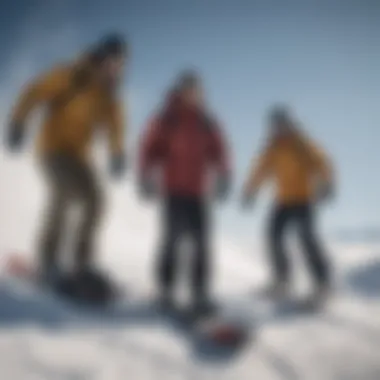
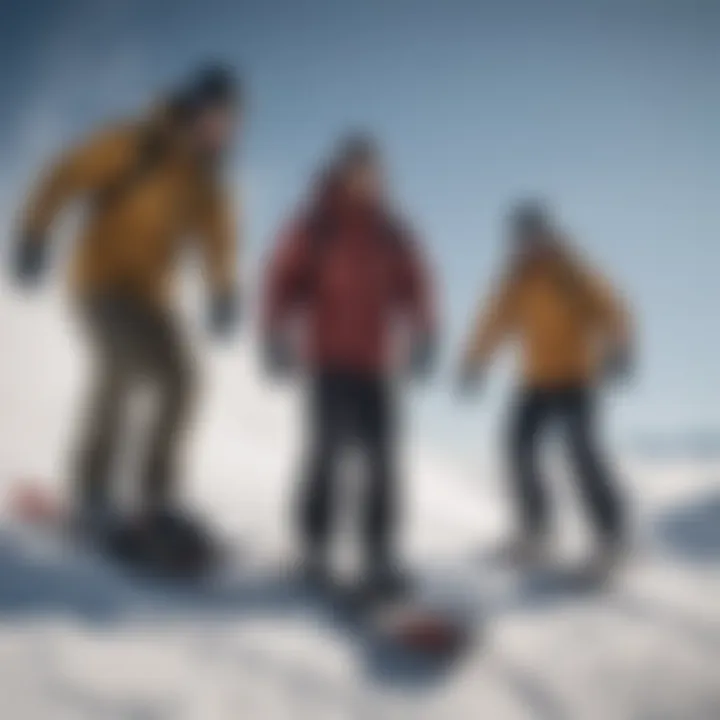
When starting with snowboard tricks, tapping into reliable and informative channels is essential. Some noteworthy platforms include:
- YouTube: Home to countless creators specializing in snowboarding tutorials. Channels such as "Snowboard Pro Camp" and "The Snowboard Academy" offer high-quality content.
- Instagram: Many professional snowboarders share their skills and tips via short, bite-sized clips that can be particularly useful.
- Reddit: Subreddits dedicated to snowboarding contain various threads where users share their experiences and recommended channels.
Some of these channels provide step-by-step guides, while others focus on specific tricks or skills. Consider subscribing to a mix for comprehensive insight.
Analyzing Trick Performances
Once you have watched tutorials, analyzing performance becomes a valuable next step. Observing experienced snowboarders can reveal intricate details that tutorials may miss. Focusing on stance, approach speed, and landing technique will enhance understanding.
It can help to take notes while watching. Consider breaking down the trick into smaller components. For example, if watching an ollie:
- Approach: Note how the rider positions themselves.
- Take-off: Observe the timing of the pop and the knees bending.
- Mid-air Position: Look for body angle and foot placement.
- Landing: Pay attention to how the knees absorb the impact.
Comparing personal attempts to these visual cues can identify areas needing improvement. Additionally, consider recording your own snowboarding sessions. Reviewing footage allows for self-assessment, providing clarity on what to focus on moving forward. This iterative feedback loop, combining external analysis and self-review, bolsters progress in learning tricks.
Community and Collaboration
Community and collaboration are vital components in the journey of learning snowboard tricks. Engaging with fellow snowboarders not only enriches the experience but also fosters a supportive atmosphere crucial for progression. Beginners, in particular, stand to gain significantly from interacting with others who share their passion for snowboarding. The sharing of knowledge, tips, and techniques among peers can accelerate learning and skill development.
When snowboarders come together, they create a network of support. This network can be crucial for motivation during tough times, especially when a trick proves to be particularly challenging. Encouragement from others contributes to building confidence, which is essential for taking on new tricks.
Moreover, community involvement allows for diverse perspectives and experiences. Each snowboarder might have different learning methods and preferences. By collaborating, individuals can discover new approaches that they may not have considered. This exchange of ideas often leads to improved techniques and a deeper understanding of the sport.
Networking within the snowboard community also opens doors to various opportunities, such as group outings and workshops. These events can enhance skills in a more structured environment, where guidance is readily available.
"Being part of a snowboarding community is like having a second family on the slopes. You learn and grow together."
Connecting with Other Snowboarders
One of the most effective ways to learn more about snowboarding is by connecting with others who share the same interest. Local snowboard clubs and online forums provide excellent platforms for beginners. Engaging in conversations with experienced riders can yield insightful tips and tricks that can greatly enhance one’s ability to perform.
These connections can be made through social media platforms like Facebook or discussion boards on websites like Reddit. Online communities often organize group activities that allow beginners to gain experience in a less intimidating setting. Meeting snowboarding partners encourages practice and regular outings, which are key to improving skills.
Joining Snowboarding Groups
Finding a snowboarding group can be a transformational step for anyone looking to refine their skills. These groups can range from informal meetups at the local hill to more structured clubs that offer lessons and events throughout the season.
When joining a group, individuals have access to a wealth of resources such as workshops, clinics, and competitions. These activities not only offer ample opportunities to practice but also introduce members to experienced coaches who can provide personalized feedback.
Additionally, groups often emphasize safety and provide a platform for members to discuss important aspects of snowboarding, such as gear maintenance and injury prevention. Being involved in such a community can make one feel more grounded and supported, ultimately enhancing the overall snowboarding experience.
In summary, the facets of community and collaboration should not be overlooked in the pursuit of mastering snowboard tricks. The relationships formed and experiences shared can significantly contribute to individual growth and enjoyment of the sport.
Common Mistakes to Avoid
When venturing into the world of snowboarding tricks, recognizing and avoiding common mistakes is crucial. This section highlights specific pitfalls that beginners often encounter. Awareness and proactive measures against these errors can enhance the learning experience and ensure safety on the slopes. By understanding these mistakes, snowboarders can significantly improve their skills and confidence while practicing.
Overestimating Skill Level
One prevalent error among novice snowboarders is overestimating their skill level. Many beginners may feel a surge of confidence after a few successful runs, leading them to attempt tricks beyond their current capabilities. This attitude can result in injuries or damage to equipment. It is essential to approach each trick with a realistic self-assessment of one's abilities.
To avoid this mistake, consider the following factors:
- Self-Assessment: Take time to evaluate your riding skills honestly. Recognize weaknesses and strengths.
- Progressive Learning: Stick to tricks that align with your current abilities before progressing to more complex maneuvers.
- Seek Guidance: Work with instructors or experienced friends who can provide feedback on your technique and readiness for new challenges.
Taking small steps in learning is more beneficial than trying to rush into advanced tricks. Always remember that everyone progresses at their own pace.
Neglecting Safety Protocols
Another critical mistake is neglecting safety protocols. While snowboarding is an exhilarating adventure, it also involves risks. Not adhering to safety guidelines can lead to serious accidents. It’s essential for beginners to prioritize safety gear and practices.
Consider these practices to avoid this mistake:
- Wear Appropriate Gear: Always wear a helmet, wrist guards, and pads where necessary. These can minimize injury from falls.
- Follow Resort Guidelines: Each snowboarding location may have specific rules and safety measures. Familiarize yourself with these before hitting the slopes.
- Stay Within Limits: Avoid complex terrains or crowded areas until you have sufficient experience. Choose slopes that match your skill level to keep things safe.
Safety is not an option on the slopes; it is a necessity. Protect yourself to enjoy the sport fully.
By understanding these common mistakes, snowboarders can create a safer and more enjoyable experience for themselves. Awareness of one’s skill level and adherence to safety protocols will lead to better performance and greater confidence on the snowboard.
Finale and Next Steps
As we reach the conclusion of this exploration into easy snowboard tricks, it is essential to reflect on what has been learned and how to effectively apply this knowledge. Understanding where you stand in your snowboard journey will not only help in recognizing your accomplishments but also in preparing for future challenges.
Reviewing Progress
Reviewing your progress is crucial in any learning endeavor, particularly in snowboarding. Take time to assess the tricks you have learned. Think about the skills you have developed, the falls you have endured, and the small victories that may seem insignificant but are essential markers of growth. Consider keeping a journal of your training sessions. Write down what tricks you attempted, what worked, what did not, and how you felt during each session. This reflective practice can provide insights into your development over time.
"The only real failure is the failure to learn from experience."
Moreover, progress in snowboarding is not always linear. You might find that some days you excel and others you struggle. Be patient with yourself. Each ride on the slopes contributes to your overall learning. Celebrate the small milestones, like perfecting a grab or landing a solid 180 spin. These experiences help build a strong foundation for more challenging tricks in the future.
Setting New Challenges
Once you have evaluated your progress, it is time to set new challenges. This can mean a variety of things: learning a new trick, increasing the height of your jumps, or even attempting to ride on different terrains. Setting specific, measurable goals enhances motivation and gives clear direction to your practice sessions.
Consider pushing your limits gradually. You might decide to work on variations of tricks you’ve mastered or explore different styles of riding, such as freestyle or backcountry. It’s beneficial to seek out challenges that excite you but also align with your current skill level. Remember, the journey of learning snowboard tricks is ongoing. Each challenge should foster a sense of achievement and propel you towards greater skill.







